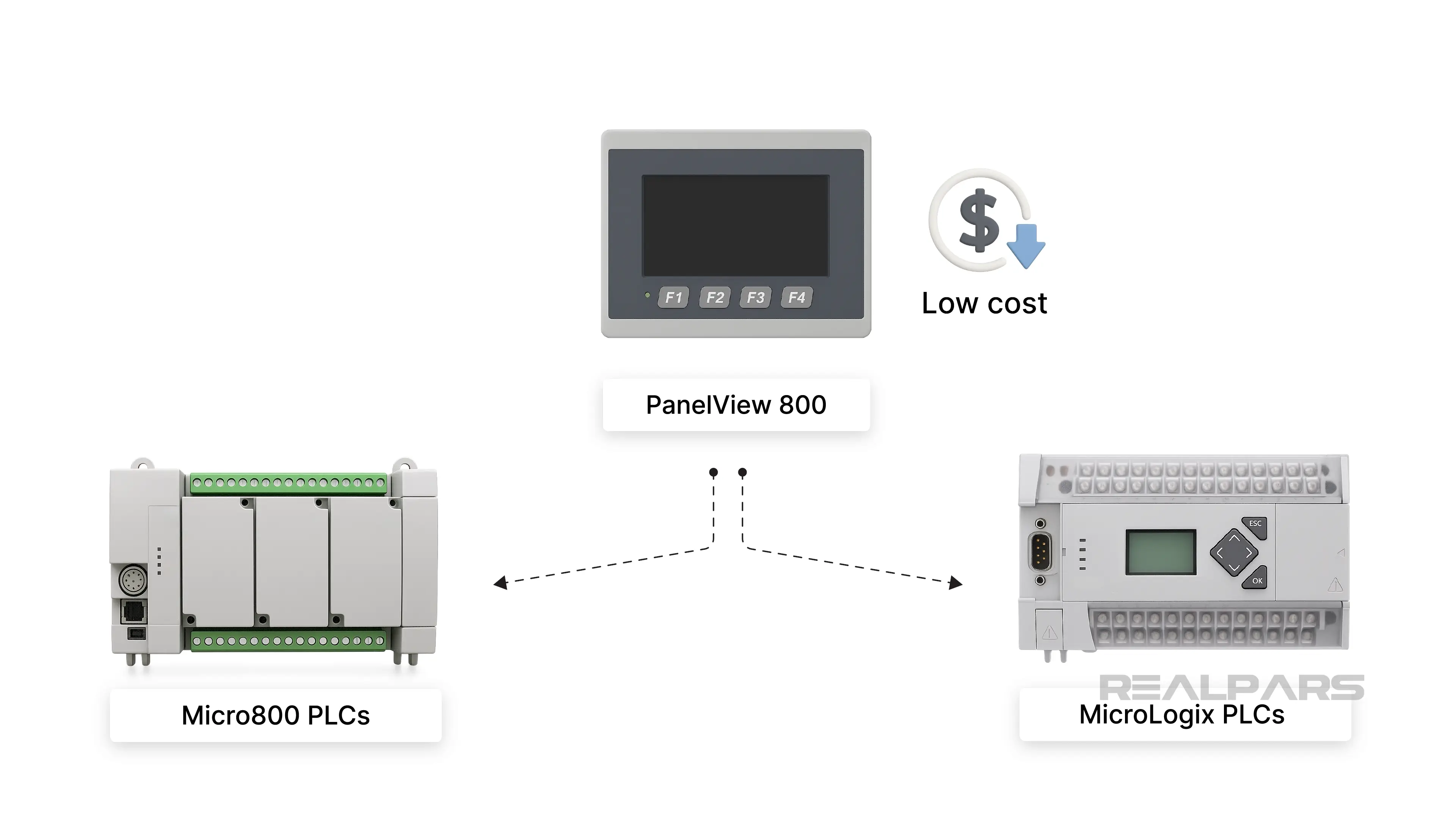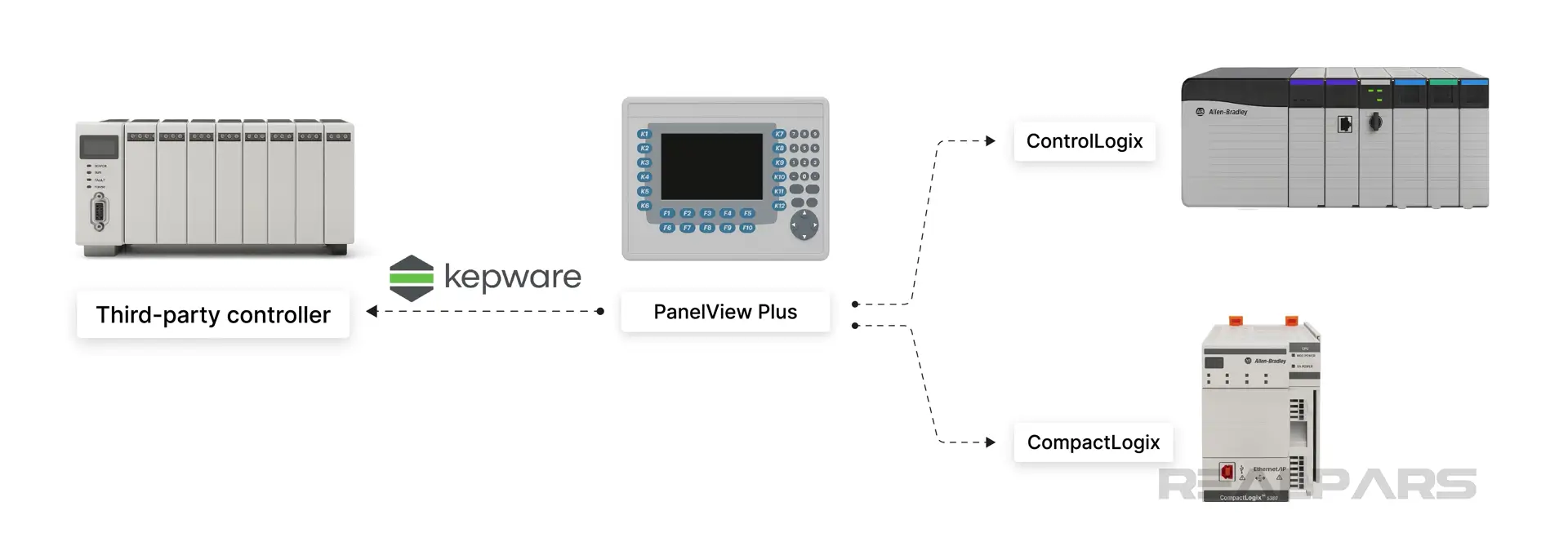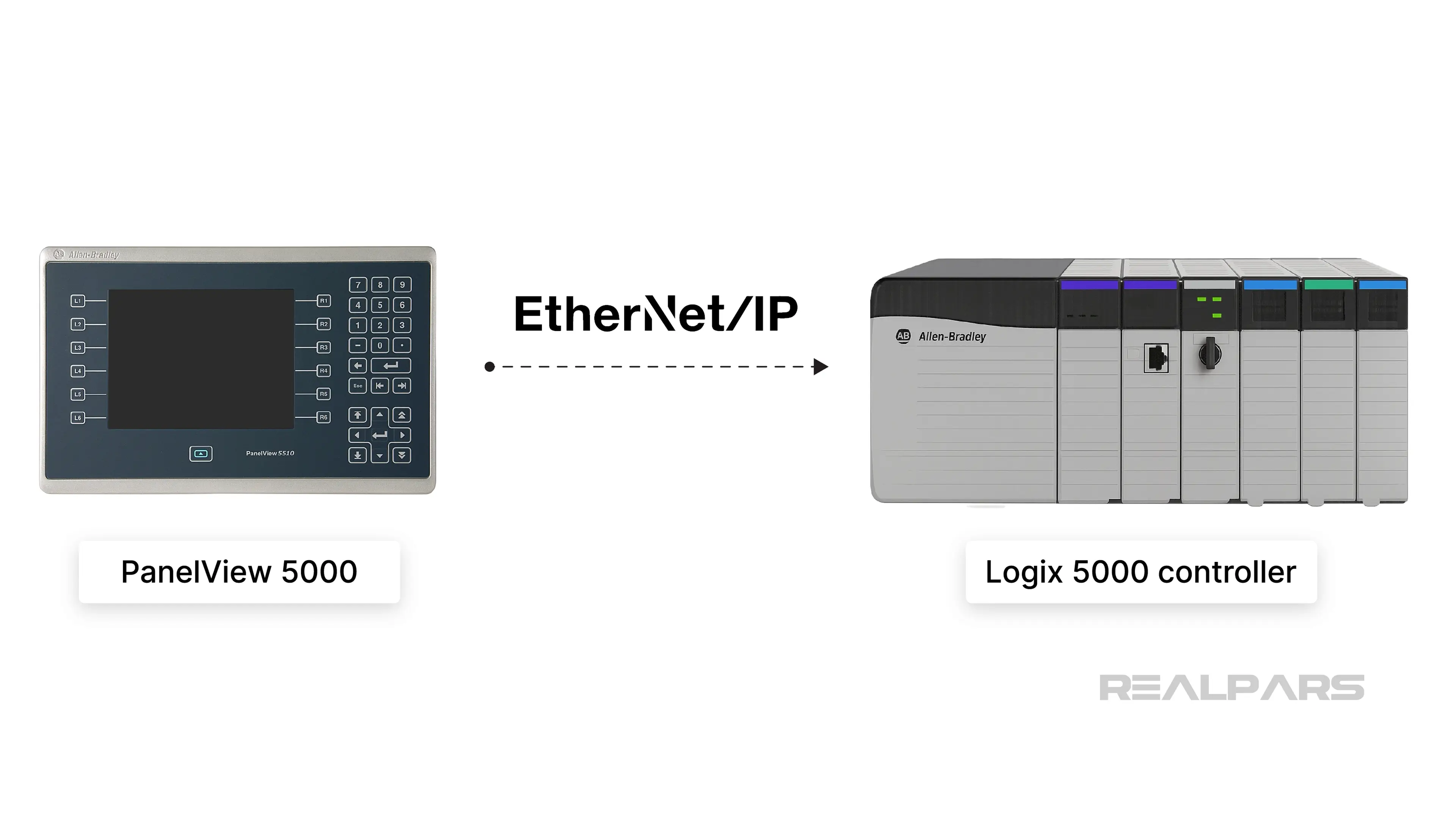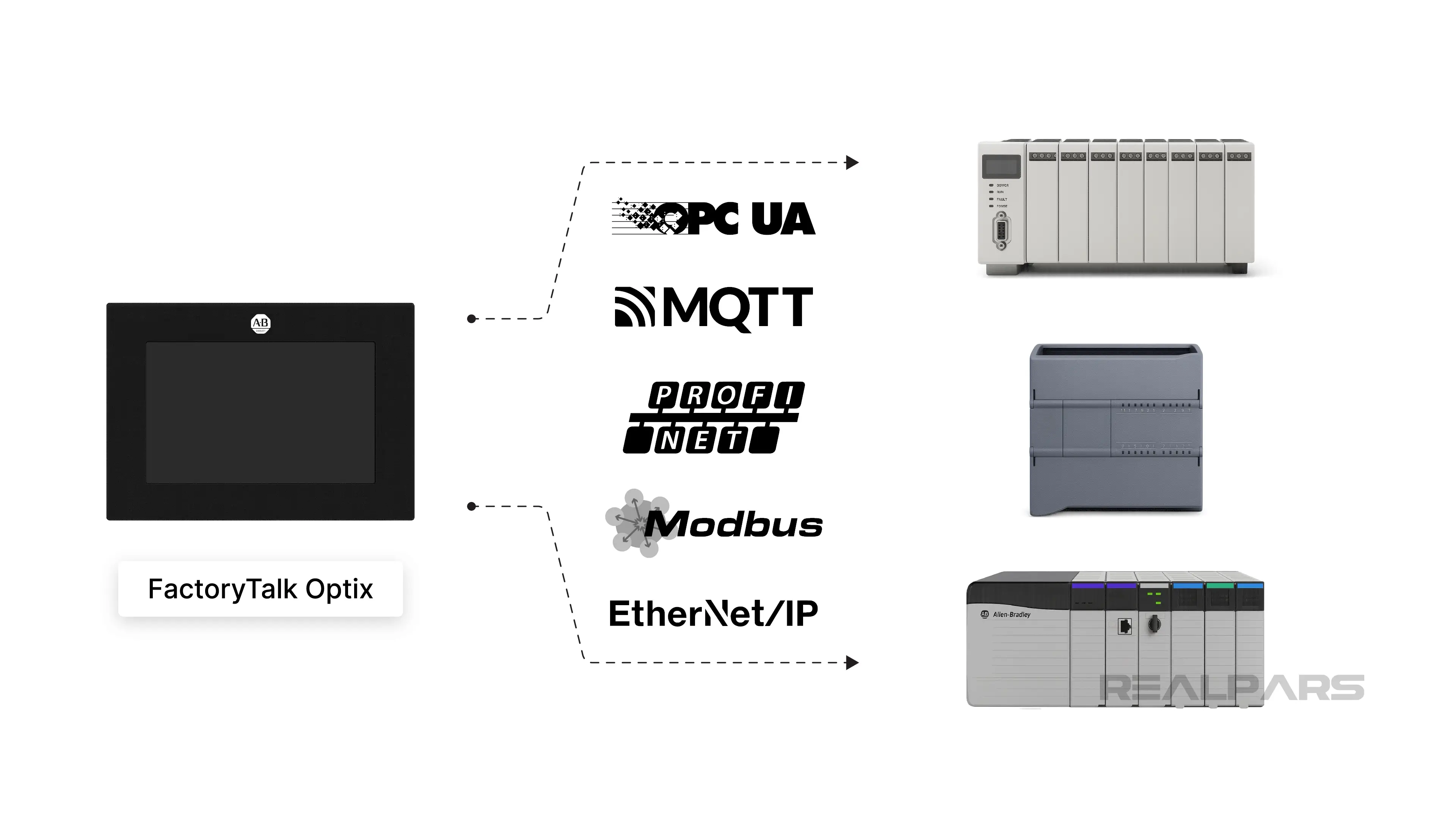Rockwell Automation offers a variety of different solutions for machine-level HMI. Each of these solutions exists for a reason, and each solution has distinct advantages and disadvantages.
With so many options available, choosing the right machine-level HMI solution for your project can be challenging.
If you’d prefer watching instead of reading, check out the video below. Otherwise, feel free to skip it and continue with the blog.
In this article, I’m going to take you through Rockwell Automation’s full portfolio of machine-level HMI solutions.
By the end of the article, you will know the pros and cons of each solution and the types of projects that each solution is used for. You'll know which HMI solution best fits different project requirements.
Let’s start by talking about Rockwell Automation’s low-cost range of HMI terminals in the next section.
Allen-Bradley PanelView 800 HMIs
Allen Bradley PanelView 800 HMIs are a range of low-cost HMI terminals that are optimized for use with Allen Bradley Micro800 and MicroLogix PLCs.

These are basic HMIs that are designed for simple applications on standalone machines.
They are programmed using the Connected Components Workbench software. This is a free development environment that is also used to program Micro800 PLCs and configure PowerFlex drives.
PanelView 800 HMIs are appropriate for projects that :
- use Micro800 or MicroLogix PLCs,
- are price sensitive, and
- only need simple functionality
PanelView 800 HMIs are not appropriate for projects that;
- Require connections to more than one controller,
- Require complex functionality, or
- Use ControlLogix or CompactLogix controllers
PanelView Plus HMIs
For larger applications, you might consider using a PanelView Plus HMI.
These HMIs are more advanced than PanelView 800 HMIs and can communicate with a wider range of PLCs. PanelView Plus HMIs are optimized for ControlLogix and CompactLogix controllers, but can also communicate with third-party controllers via Kepware.

Older PanelView Plus 6 HMIs can communicate with controllers using legacy networks like ControlNet.
PanelView Plus HMIs are programmed with FactoryTalk View Studio Machine Edition, which is a paid software that allows users to build powerful HMI applications.
You might consider using PanelView Plus HMIs for
- large, complex, machine-level HMI applications,
- projects that require communication with third-party controllers, or
- projects that use legacy networks for communication.
Although PanelView Plus HMIs are still widely used, they are an older HMI product and will eventually be replaced by newer HMI solutions. For new HMI projects that don’t require the use of PanelView Plus HMIs, you might consider using a PanelView 5000 or an Optix panel.
PanelView 5000 HMIs
PanelView 5000 HMIs are modern HMI terminals that are designed to integrate tightly with Logix 5000 controllers. Unlike PanelView Plus HMIs, PanelView 5000 HMIs can only communicate with Logix 5000 controllers and they only support EtherNet/IP networks.

These HMIs are programmed using Studio 5000 View Designer which is included for free with Studio 5000 Logix Designer.
Since these HMIs are tightly integrated with Logix 5000 controllers, it is generally quick and easy to make HMI applications for Logix 5000 controllers, provided the applications don’t need custom functionality.
PanelView 5000 HMIs should not be used when communication with third-party controllers are required or a lot of custom functionality is required. For applications like these, you might consider using an Optix HMI.
FactoryTalk Optix
FactoryTalk Optix is Rockwell Automation’s latest HMI offering, and, based on the amount of investment being put into the platform, it is the future of Rockwell Automation’s visualization strategy.
Optix is a flexible and scalable HMI solution that can;
- communicate with controllers from many manufacturers on many different industrial networks,
- Connect to higher-level systems using modern protocols like MQTT and OPC UA, and
- Be customized using a C# based scripting language called NetLogic
The development environment, FactoryTalk Optix Studio, can be downloaded and used for free. This development environment includes an emulator so you can build and test applications without any hardware.
Optix is an ideal solution for projects that
- want to use the latest technology to ensure that they are future-proof,
- require communication with different types of controllers on different types of networks,
- require communication with higher-level systems using modern protocols like OPC UA or MQTT, and
- require a lot of custom functionality

Wrap-Up
Which HMIs can communicate with third-party controllers?
Learning any of these solutions increases your market value, as manufacturers have large installed HMI bases that require long-term support.
If you want to future-proof your skills and learn how to work with the latest technology, then my advice is to learn how to use FactoryTalk Optix.
If you want to learn more about how RealPars Business can train your engineering and maintenance teams, check out the link in the description below this video or head over to RealPars.com/Business.

.jpg)